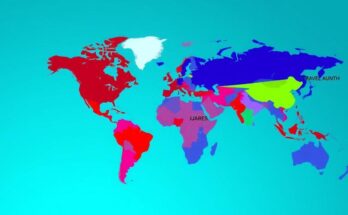Brazil faces worrying dry conditions affecting the safrinha corn crop, as recent rainfall has fallen significantly below normal levels. Mato Grosso remains relatively stable, but most growing areas are experiencing substantial moisture deficits. Forecasted rainfall is largely insufficient, raising concerns about crop development and future yields.
Recent weeks have heightened concerns regarding drier conditions in Brazil, particularly affecting the second-season corn crop (safrinha). Though soybean harvest is concluding in many regions, the states from Paraná to Piaui depend on adequate wet season rainfall throughout March to sustain soil moisture levels for the safrinha corn. Unfortunately, rainfall has been disappointing thus far, posing a threat to early corn development.
Estimates indicate that most of Brazil’s agricultural zones are facing deficits in rainfall over the past 30, 60, and 90 days, with Mato Grosso experiencing conditions closer to normal compared to the eastern regions, where rainfall is recorded at 20% or less of normal levels. Some areas have experienced less than an inch of rainfall over the past month, significantly impacting the potential for productive corn yields this season.
While consistent rainfall until early May may alleviate some moisture deficits, restoring adequate subsoil moisture remains a formidable challenge. Much of the corn crop is reliant on this moisture during crucial pollination phases in mid- to late-April, a time when rainfall typically begins to wane. Without sufficient subsoil moisture, corn development prospects remain increasingly uncertain.
Recent satellite images from NOAA and NASA illustrate the extent of drought affecting areas outside Mato Grosso, particularly in the south-central, eastern, and northern regions of Brazil. A front has been stalled over central Brazil and is predicted to deliver scattered showers into late March; however, forecast amounts are expected to be below normal.
Rainfall predictions for the coming week suggest variability, generally forecasting 1 to 2 inches with isolated areas in Minas Gerais potentially receiving 2 to 3 inches. Nonetheless, this anticipated rainfall still falls short of normal levels, with some regions, such as southern Goiás and southeastern Mato Grosso, likely to receive only half the expected average.
Moreover, recent rainfall models appear to have overestimated precipitation amounts, which could exacerbate the situation for Brazilian producers. Initially predicted rainfall amounts of 2 to 3 inches have often resulted in only spotty areas reaching these totals, with many experiencing considerably less than expected. Persistent overestimations by forecasts could potentially worsen the plight of producers in Brazil.
In summary, Brazil is grappling with significant drought concerns, particularly impacting the safrinha corn crop as critical wet season rainfall remains insufficient. While forecasts hint at potential showers, the volume expected is still below normal, raising alarms about sufficient soil moisture and the overall health of the corn crop. The accuracy of rainfall predictions will be crucial moving forward, as continued overestimations may further threaten agricultural productivity in the region.
Original Source: www.dtnpf.com




